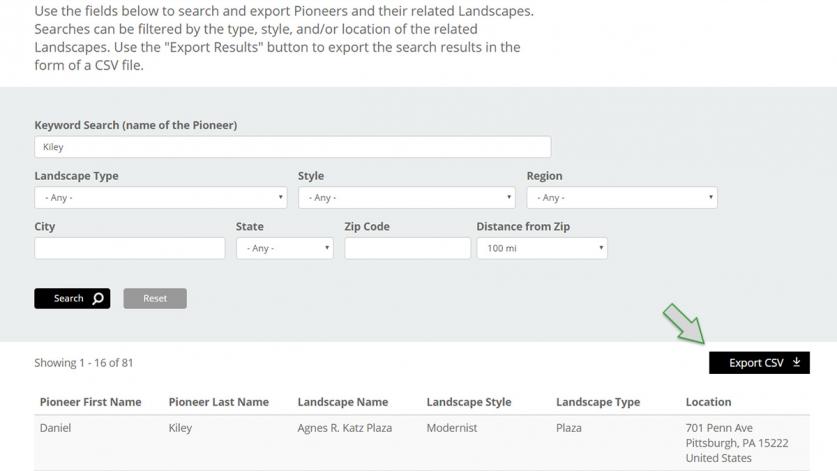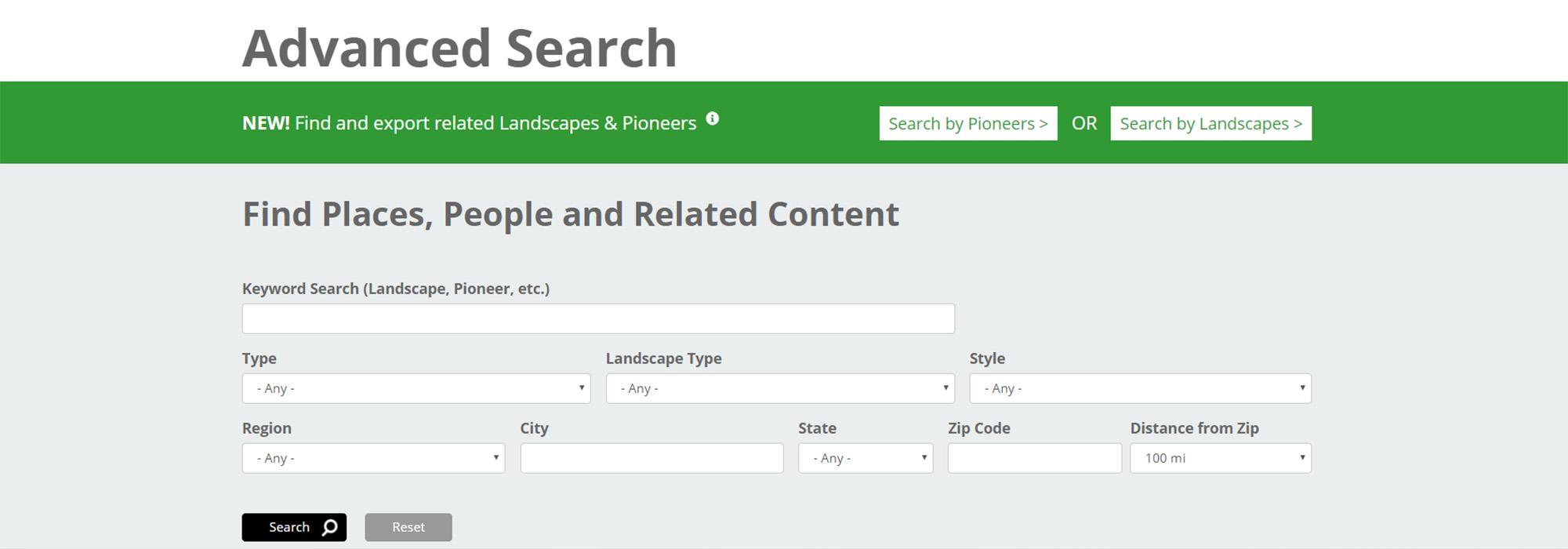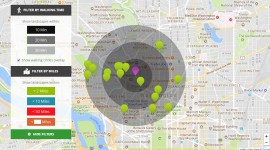TCLF Launches New Online Research Tool
In early October 2018, TCLF launched a new online feature developed to enhance the functionality of the What’s Out There database of cultural landscapes and their designers. Visitors to TCLF’s website can now download search results from the database in the form of an electronic CSV (Common Separated Values) file, including the popular Excel spreadsheet. Other upgrades to the database are planned for 2019.
Long an attraction for researchers, the database relates several characteristics of each landscape, allowing searches to be filtered by the landscape’s type (e.g., Plaza), style (e.g., Modernist), and location (including region, city, or state). Now, users who employ the “Advanced Search” feature can choose to download the filtered results, with information listed by category, in any number of file formats. This allows users to obtain tailored lists of search results that reflect the various characteristics of the landscapes at the desired level of granularity. Conversely, users can obtain and download search results based on the designers (or Pioneers) of the landscapes, also filtered by type, style, or location.

The new functionality was made possible by a grant from the National Center for Preservation Training and Technology, founded in 1994 as an appendage of the National Park Service. Freely available to the public, What’s Out There is the nation’s most comprehensive database of cultural landscapes and their designers and includes more than 2,100 landscapes, 900 designer profiles, and 12,000 images. Each entry is further linked to an array of related content (such as news stories, press releases, tour information, lectures, etc.) and also works in tandem with What’s Nearby, an online feature that allows visitors to TCLF’s homepage to see the landscapes that are in the vicinity of their current location, as well as the landscapes that are in close proximity to each other, regardless of the user’s location.




